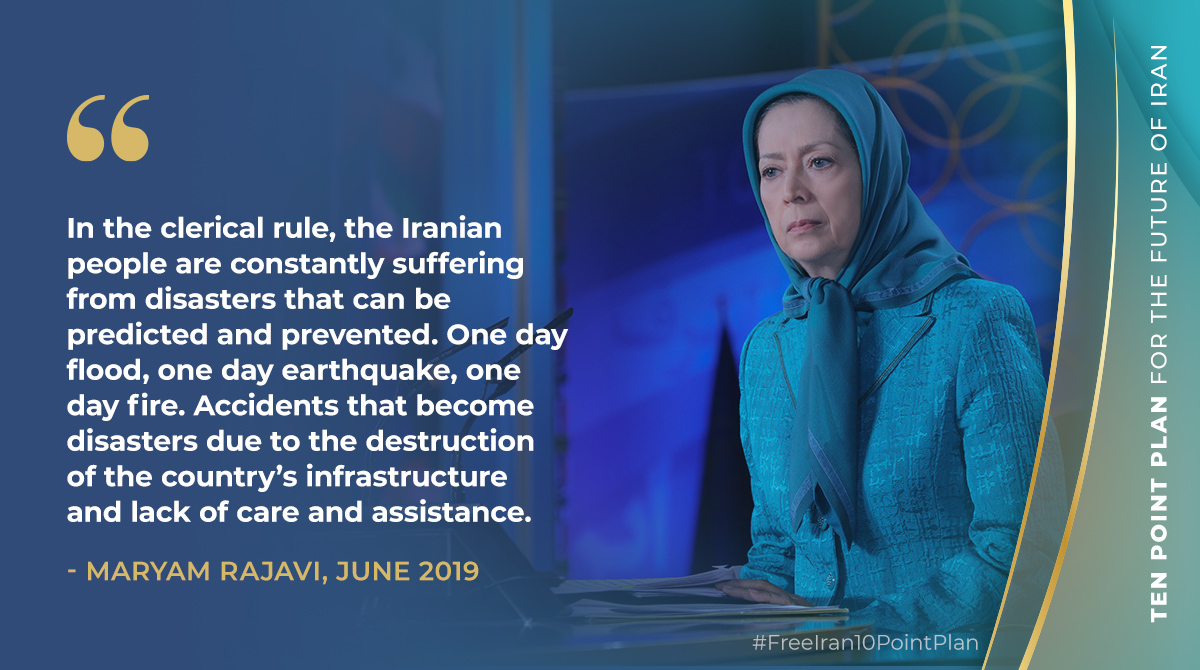
(PMOI / MEK Iran) and (NCRI): The goal of the day is to promote awareness about the necessity of minimizing the risks that people and communities suffer when they are exposed to natural catastrophes.
The International Day for Disaster Reduction (IDDR) was created by the United Nations General Assembly on October 13 to encourage all citizens and governments to construct more disaster-resilient communities and promote a global culture of risk awareness and disaster reduction.
The International Day for Disaster Reduction
The goal of the day is to promote awareness about the necessity of minimizing the risks that people and communities suffer when they are exposed to natural catastrophes.
“International cooperation for developing countries to reduce disaster risk and disaster losses” is the theme for 2021. With appropriate management, we can withstand the danger of natural catastrophes and limit the number of people affected by them as well as the damage they cause.
The National Council of Resistance of Iran (NCRI), and the People’s Mujahedin of Iran (PMOI / MEK Iran), reported that in 2021, the Iranian people will be as helpless as they have been in recent years, with the government providing no assistance in the face of natural disasters such as floods, earthquakes, forest fires, or drought. The performance of the mullahs’ regime bears little resemblance to world goals.
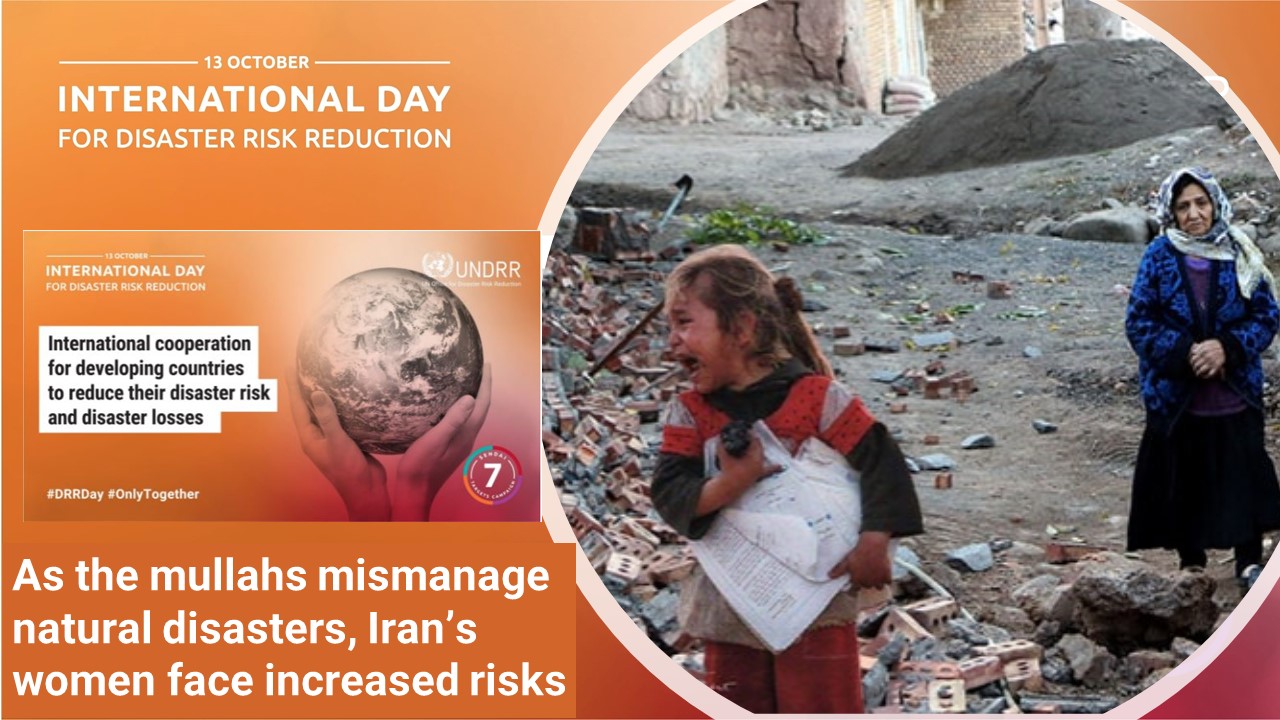
(PMOI / MEK Iran) and (NCRI): As the mullahs mismanage natural disasters, Iran’s women face increased risks.
The catastrophic spread of the Coronavirus in Iran
Due to the catastrophic spread of the Coronavirus in Iran, the National Council of Resistance of Iran (NCRI), and the People’s Mujahedin of Iran (PMOI / MEK Iran), reported that more than 458,700 people had died in Iran as a result of the Covid-19 outbreak as of October 17. The Iranian people, particularly women, are confronting natural calamities as well as significant economic hardship. In the face of natural disasters and calamities, the corrupt clerical regime has abandoned its responsibility to the people.
Floods, according to the Hamshahri daily on February 20, have been Iran’s worst natural calamity in the last four decades, posing the greatest danger to the Iranian people’s lives. Floods have hit most of Iran, causing widespread devastation. The flood’s extent of destruction and loss of lives and property is growing.
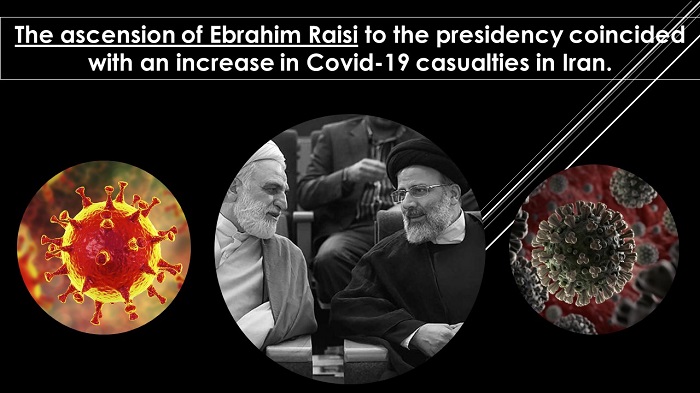
(PMOI / MEK Iran) and (NCRI): The ascension of Ebrahim Raisi to the presidency coincided with an increase in Covid-19 casualties in Iran. Coronavirus
Watershed can reduce flood damage by up to 70%
On September 15, the state-run Tasnim news agency reported that “watershed management operations can reduce flood damage by up to 70%.” However, Iran has suffered significant financial and human losses as a result of the clerical regime’s delay and failure to manage the watershed. People in low-income communities and those with low socioeconomic standing are the primary victims of such harm.
On June 22, the dean of Tehran University’s Institute of Geophysics confirmed the registration of 2,619 earthquakes that occurred between March 21 and June 21.
There were five earthquakes with a magnitude greater than 5, 33 earthquakes with a magnitude between 4 and 5, and 210 earthquakes with a magnitude between 3 and 4 Richter. Heavy earthquakes of magnitudes greater than five Richter struck Bushehr province’s Bandar Genaveh and North Khorasan province’s Shoghan twice, and Ilam province’s Salehabad once.
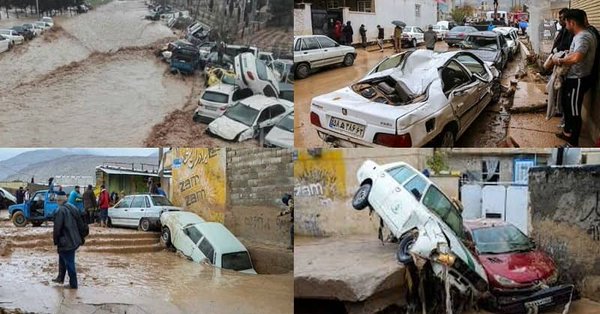
(NCRI) and (PMOI / MEK Iran): Two weeks past the flooding, the Iranian regime is still not supplying aid to tens of thousands of people who’ve lost their homes, farms, and animals, and are in need of very basic food and closing, etc.
Iran has never rebuilt earthquake-affected cities
During its 42-year rule, Iran’s Islamic leadership has never rebuilt earthquake-affected cities. Residents in these locations are still living in temporary trailers at best.
In addition, the state-run Salam-e No daily stated on July 15 that more than 17,000 fires occurred in Iran’s forests and pastures over an eight-year period from 2013 to 2020, causing devastation. More than 162,000 hectares of jungle and crops were devastated.
The failure of government agencies to manage fires in a timely manner is the primary cause of the fire spreading to other places. The majority of provinces lack the necessary equipment, such as sprinkler helicopters, to properly fight the fire. As a result, if a fire occurs, residents must respond with empty hands and minimal equipment.
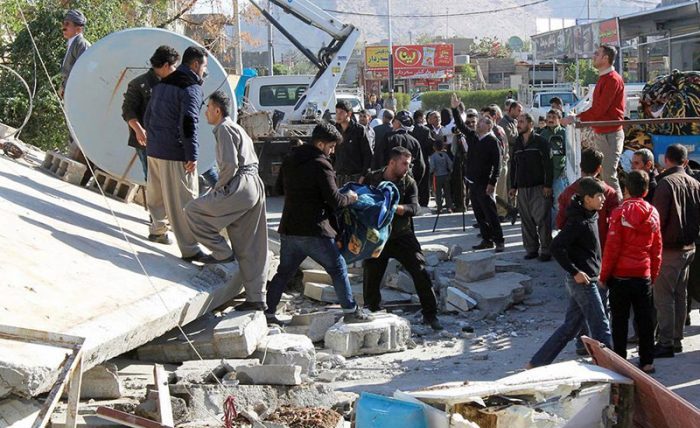
(NCRI) and (PMOI / MEK Iran): A 6.3 magnitude earthquake hit western Iran- in the same area that it hit last year, leaving over 1000 injured and many still missing.
Drought has an impact on agriculture
Drought has been declared in Iran, according to the National Center for Drought and Crisis Management. Drought has an impact on agriculture, drinking water, and a variety of other issues. Drought has a huge impact on northern regions due to deforestation and the washing away of important soil.
The leadership has shied away from taking responsibility for addressing the issue of dehydration and drought. Officials portray the problem as unresolvable, citing poor rainfall and Iran’s location in the dry and semi-arid zone as explanations. Environmentalists, on the other hand, attribute the problem to poor water management.
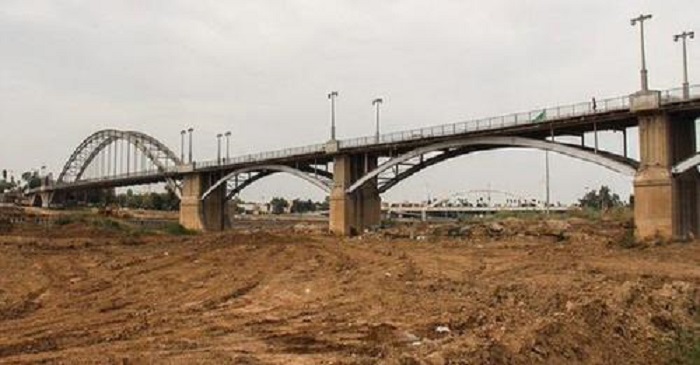
(NCRI) and (PMOI / MEK Iran): the Karun, Karkheh, Dez, Maroun (Jarrahi), Shavur, Zohreh (Hendijan), Bahmanshir, and Arvandroud, it is currently experiencing severe water scarcity.
Women are among the first to suffer
Women are among the first to suffer as a result of the regime’s populist policies. They suffer unique health and dietary challenges in every crisis, as well as the loss of shelter and living facilities.
Natural disasters have caused catastrophic devastation, and a lack of infrastructure is just one of thousands of difficulties that the clerical system has inflicted on the Iranian people. As one of the world’s most corrupt administrations, it is apparent that this regime neither wants nor can control the natural disaster crisis it has sparked.
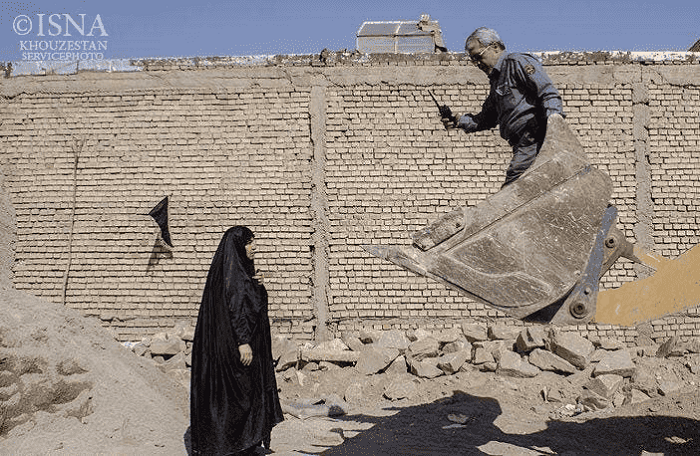
(NCRI) and (PMOI / MEK Iran): Women of Abolfazl village stood up to state agents who attempted to destroy their homes.
MEK Iran (follow us on Twitter and Facebook)
and follow Maryam Rajavi’s on her site 
and follow NCRI (Twitter & Facebook) and People’s Mojahedin Organization of Iran – MEK IRAN – YouTube
